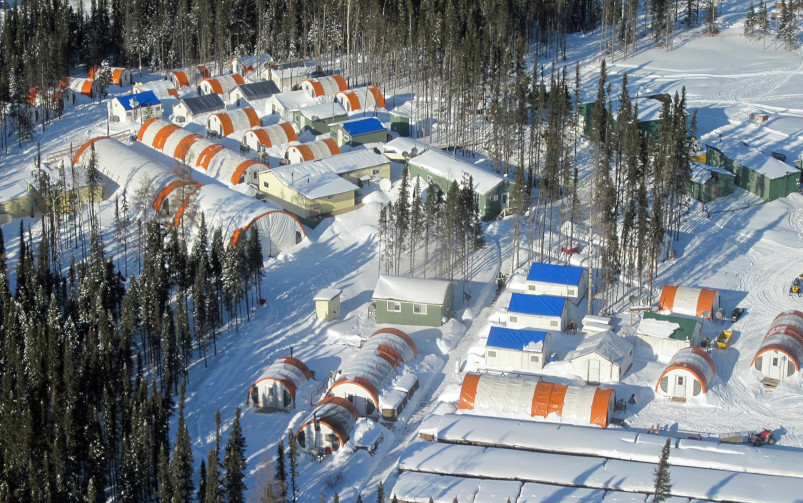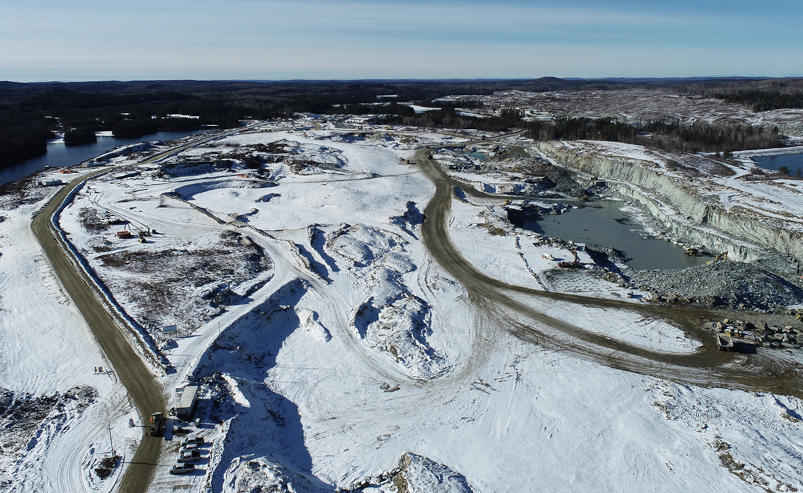Teck has constructed two water treatment facilities in Elk Valley, with two more to begin operations in 2021, as part of its Elk Valley Water Quality Plan. Courtesy of Teck Resources.
On Mar. 26, Teck Resources announced that its subsidiary, Teck Coal Limited, had pleaded guilty to two charges under the federal Fisheries Act relating to discharges of selenium, nitrate and calcite from its steelmaking coal operations into the Elk Valley watershed.
Teck was first charged back in 2012, when it was discovered that waste rock from the company’s Fording River and Greenhills coal operations were leaching pollutants into the region and causing significant negative effects to local aquatic wildlife. Under the plea, Teck will pay a total of $60 million for the two charges, the largest fine ever paid under the Fisheries Act. Teck will not face charges related to further pollutant discharges from 2013 to 2019.
In an open letter, Teck CEO Don Lindsay apologized for the impacts of the discharges.
“We sincerely apologize and take responsibility for the impacts of these discharges,” Lindsay wrote. “Everyone at Teck is committed to responsible mining that protects the environment. Which is why, over the nine years since, we have worked hard to solve this challenge and ensure the watershed is sustained for the long term.”
Teck, in collaboration with the provincial government, the Ktunaxa Nation, scientists and local communities, developed its Elk Valley Water Quality Plan – a long-term strategy aimed at reducing the amount of pollutants discharged into and presently in the watershed. Thus far, Teck has constructed two water-treatment facilities in the region, which combined treat up to 27.5 million litres of water per day. Two additional treatment facilities are expected to begin operating in 2021 and, combined, filtering another 27 million litres of water per day.
Related: New technologies in environmental monitoring are making it easier than ever for mining companies to focus more on sustainability while minimizing the disruption of existing ecosystems
Teck has also been researching other methods to reduce the amount of selenium released from its operations, such as using geo-synthetic covers to reduce water percolating through waste rock and diverting clean water away from the waste rock. In October 2020, Environment and Climate Change Canada issued a direction under the Fisheries Act to Teck, requiring the company to proceed with these methods, as well as the installation of a 200-hectare geo-synthetic cover trial in the Greenhills Creek drainage by Dec. 31, 2030. Teck estimates these measures will cost between $350 million to $400 million over 10 years.
Despite the investment from Teck, there is still significant work to be done to improve the water quality at Elk River. According to the company’s 2020 Environmental Monitoring Committee report, the number of Westslope Cutthroat Trout in the upper Fording River declined significantly between fall 2017 and fall 2019. (An investigation into the cause of this decline will be concluded in late 2020 and a final report of the findings will be published in early 2021.) Additionally, selenium, nitrate and sulphate totals were found to be above compliance levels numerous times at its Fording River and Line Creek operations in 2019.
In a statement released on Mar. 26, the Ktunaxa Nation Council stressed the importance of the Elk Valley to its community.
“There have been significant impacts to wuʔu (the water) in Qukin ʔamaʔkis (Elk Valley) due to coal mining, and those impacts continue to grow today with Teck Coal Limited’s operations,” said the letter. “This case, the charges laid, and the fines assessed, are steps in acknowledging the harm that has been and continues to be done to ʔamak ȼ wuʔu (the land and water) by development impacts done without Ktunaxa consent.”
“[To] the Ktunaxa First Nation, whose territory we operate on, and to our communities in the Elk Valley, we deeply regret these impacts and we apologize,” Lindsay said. “You have my commitment that we will not waver in our focus on addressing this challenge and working to ensure that the environment is protected for today and for future generations.”




